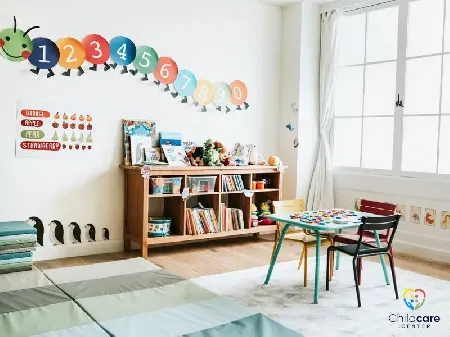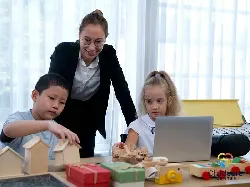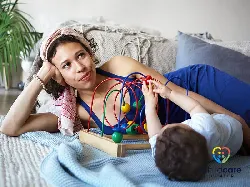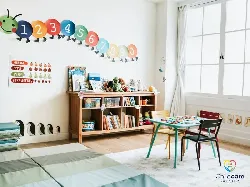Back to school tips: a parent’s guide to smoothing the transition

The transition from summer vacation to a new school year is a significant milestone, filled with both excitement and challenges for children and parents alike. As Canadian parents, we understand that the "back to school" season is more than just shopping for supplies and meeting new teachers; it's about preparing our children emotionally, mentally, and physically for the journey ahead. From establishing a consistent routine to fostering positive associations with learning, there are various ways to ensure a smooth transition.
Navigating the educational landscape during the back-to-school season can present a complex set of challenges for parents, particularly in the Canadian context where diverse educational systems and cultural nuances come into play. This comprehensive guide is designed to serve as a resource for parents, offering empirically-backed strategies and actionable tips for facilitating a seamless transition into the new academic year. From optimizing your child's learning environment at home to leveraging psychological insights for emotional preparedness, this guide aims to provide you with a holistic toolkit for academic success.
Tips for a smooth back-to-school transition
The transition from leisurely summer days to the structured environment of a new school year is a pivotal moment for both children and parents. It's a time that calls for meticulous planning, emotional readiness, and strategic action. As parents, you are not just tasked with buying new school supplies or meeting teachers; you are the architects of your child's academic and emotional well-being.
In an era where educational success is not merely defined by grades but by holistic development, it's imperative for parents to be strategic partners in their children's education. This involves more than just parent-teacher meetings or homework help; it's about creating an ecosystem that nurtures not just intellectual but also emotional and social growth. Proceed to explore the subsequent sections for a more comprehensive understanding of each topic:

Encouraging Positive Associations with Back to School
The back-to-school transition is a pivotal moment that can set the tone for the entire academic year. As parents, it's crucial to encourage positive associations with this transition to ensure your child's success and well-being. By framing the journey back to the classroom as an exciting new chapter, you can help your child approach it with enthusiasm and openness, reducing any resistance or apprehension they may feel.
- Building Excitement for Learning
Igniting a passion for learning is essential, especially as your child prepares to go back to school. Children are naturally curious, and tapping into that curiosity can make subjects come alive. As you approach the back-to-school season, consider integrating educational games or hands-on activities that align with your child's interests. These not only make learning enjoyable but also help in developing critical thinking and problem-solving skills, which are invaluable for the new school year.
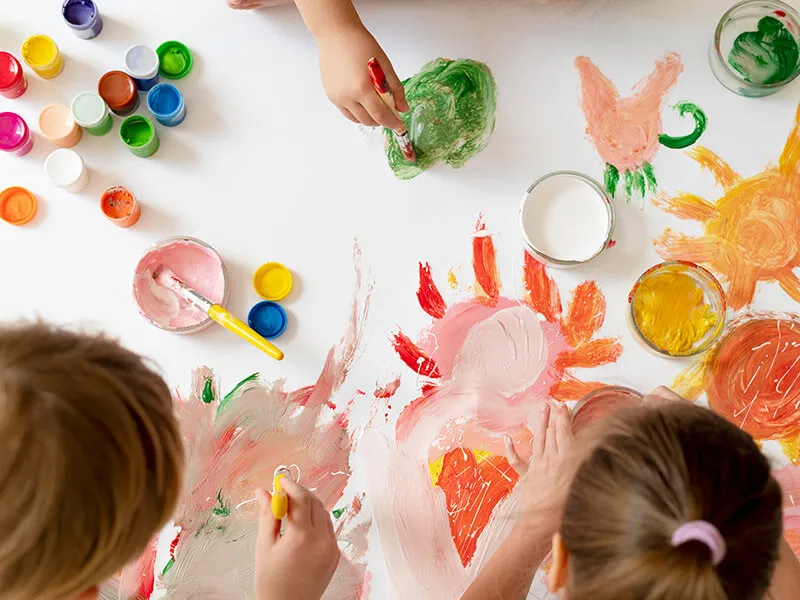
- Visiting the School Campus Together
The school environment plays a significant role in your child's back-to-school experience. Taking a tour of the campus can help familiarize your child with the setting they'll soon be a part of. Point out key areas like the library, the art room, or the sports field, and if possible, introduce your child to some of the teachers and staff. This helps transform an unfamiliar space into a welcoming environment, making the back-to-school transition smoother and less daunting.
Connecting with Teachers and School Staff for Back to School
As the back-to-school season approaches, establishing strong relationships with teachers and school staff becomes increasingly important. These connections serve as a vital link between home and school, ensuring that your child's educational experience is both enriching and supportive. By actively engaging with educators, you can stay informed and involved, making the back-to-school transition smoother for everyone involved.
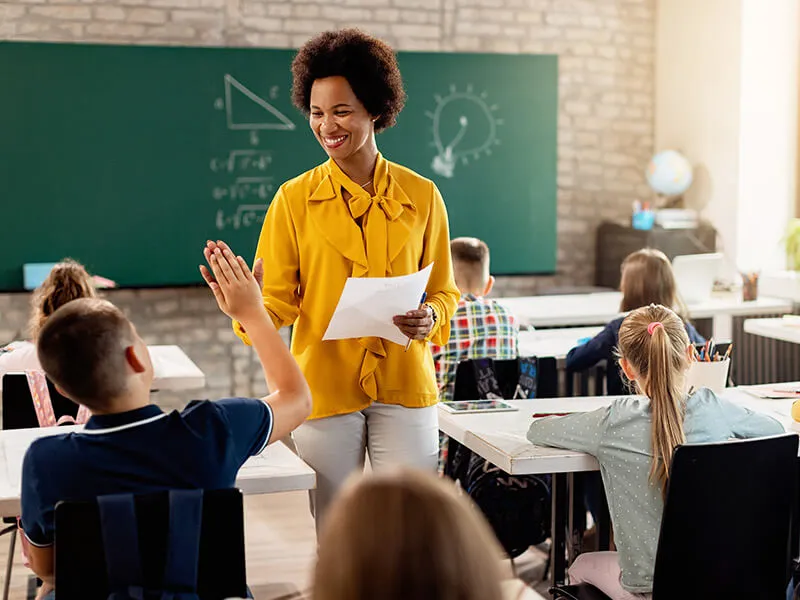
- Open Communication with Educators
Open communication with teachers is crucial, particularly during the back-to-school period. Regular check-ins, whether through scheduled meetings, emails, or informal chats, offer valuable insights into your child's academic progress and social well-being. This two-way communication not only keeps you updated but also allows teachers to better tailor their approach to your child's specific needs, enhancing the overall back-to-school experience.
- Understanding the School's Philosophy for Back to School
As you prepare for the back-to-school season, gaining a clear understanding of the school's educational philosophy can provide a significant advantage. Whether the school follows a Montessori, traditional, or any other educational model, being aware of their approach helps you align your parenting strategies accordingly. This ensures a more cohesive and effective educational experience as your child transitions back to school.
Creating a Consistent Routine for Back to School
As the back-to-school season looms, establishing a consistent routine becomes paramount. A well-structured daily schedule can ease the transition, providing your child with a sense of stability and predictability. From sleep patterns to meal planning, a routine can significantly impact your child's academic performance and emotional well-being during the back-to-school period.
Understanding the connection between sleep and learning in children is pivotal for their development. Every parent should be aware of how a good night's sleep can significantly enhance a child's ability to absorb and retain new information. To delve deeper into this subject, our resource "How Sleep and Learning in Children Are Connected: What Every Parent Should Know" offers valuable insights into the science behind sleep's role in learning and practical tips to improve sleep habits.
- Establishing a Sleep Schedule for Back to School
Adequate sleep is crucial for cognitive function and mood regulation, especially when transitioning back to school. Start adjusting your child's sleep schedule a few weeks before school starts to align with school timings. This gradual shift can help mitigate the impact of early mornings, ensuring your child is alert and ready to learn.

Complementing a well-adjusted sleep schedule, consider incorporating our tips from "Morning Routine Magic: How Parents Can Start the Day Right," to streamline your morning routine and start each day on a positive note.
- Planning Nutritious Meals and Snacks for Back to School
Nutrition plays a vital role in your child's ability to focus and engage in learning. As you prepare for the back-to-school season, consider meal planning to include balanced, nutrient-rich foods that can sustain energy levels and improve concentration. Involve your child in the meal planning process, making it an educational and bonding activity.
As you gear up for the back to school rush, ensuring your child has access to nutritious meals and snacks is key. For those afternoons when hunger strikes, we've curated a selection of "10 Easy After School Snacks Kids Love". These quick, healthy options are perfect to keep your child energized and focused on homework and play.
Nurturing Independence and Confidence
Independence and confidence are not just buzzwords; they're foundational traits that can significantly impact your child's academic and social success. As parents, we often focus on grades and extracurricular activities, but fostering these personal qualities is equally crucial. Transitional periods, like going back to school, offer a unique window to cultivate these traits. By taking proactive steps, you can help your child navigate the challenges of a new academic year with greater self-assurance and autonomy. For more insights, check out this article on Little Things You Can Do Every Day to Make Your Child More Independent .
- Involving Children in Daily Tasks
Empowerment often starts with small, everyday actions. Simple chores, such as setting the table, sorting laundry, or organizing their backpack for the next school day, can instill a sense of responsibility and achievement in your child. These tasks are not just about getting things done; they're opportunities for your child to gain practical life skills. As they take on these roles, especially in preparation for going back to school, they build confidence and a sense of capability that will serve them well in the classroom.
- Encouraging Age-Appropriate Responsibilities
Children are more capable than we often give them credit for. As they grow, it's important to reassess and introduce new responsibilities that match their developmental stage. This could be as simple as managing their study schedule or as complex as taking on a leadership role in a school project. These responsibilities not only offer a sense of accomplishment but also provide valuable lessons in time management and accountability. As your child takes on these new roles, they're not just preparing for the school year ahead; they're laying the groundwork for lifelong skills.
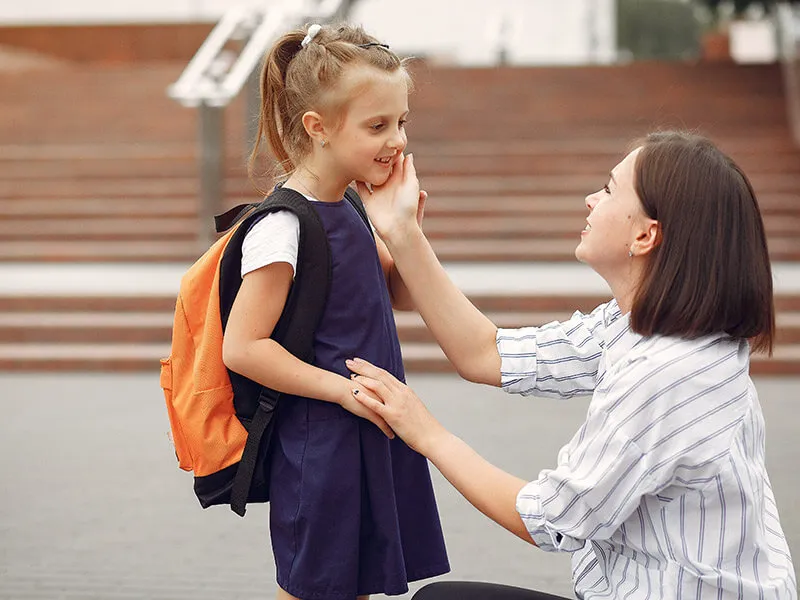
Preparing for Difficult Moments and Emotions
While the excitement of a new school year brings a sense of anticipation, it's not uncommon for both parents and children to experience a range of emotions, from anxiety to sadness. These feelings are a natural part of the transition, but they can be managed and even transformed into positive experiences. Here's how to emotionally equip your child for the ups and downs of going back to school.
- Validating Children's Feelings During Back to School
Emotions can run high during significant life changes, and the transition back to school is no exception. It's crucial to create a safe space where your child feels comfortable expressing their feelings. Acknowledging and validating these emotions can provide a sense of relief and understanding. This emotional validation not only helps your child cope with any anxieties or fears they may have but also fosters emotional intelligence, which is invaluable in navigating social dynamics at school.
- Creating Special Goodbye Rituals for Back to School
First-day jitters are a common experience, and the act of saying goodbye can sometimes amplify these emotions. Creating a special goodbye ritual can offer comfort and a sense of routine, making the separation easier for both you and your child. Whether it's a unique handshake, a special phrase, or even a short game, these rituals can serve as emotional anchors. They offer a sense of continuity and security, helping your child transition more smoothly into the school environment.
Organizing School Essentials and Supplies
The start of a new school year often means a shopping trip for essentials. But it's not just about filling a list; it's an opportunity to set your child up for success. Proper organization of school supplies can make a world of difference in your child's academic experience. Here's how to turn this routine task into an engaging and educational activity as you prepare for back to school.
- Turning Shopping into an Adventure for Back to School
Who says shopping for school supplies has to be mundane? Turn it into an adventure by involving your child in the process. Let them pick out their own backpacks, lunchboxes, and even stationery, within reason. This not only makes the shopping experience more enjoyable but also gives your child a sense of ownership over their school supplies, making them more invested in using them responsibly during the school year.

- Playing "Back to School" at Home
Once the shopping is done, why not make the process of organizing supplies a game? Create a "back to school" scenario at home where your child gets to pack their new supplies into their backpack, set up their study area, and even practice using their new items. This playful approach not only helps with organization but also familiarizes your child with their new supplies, reducing any first-day-of-school anxieties.
Establishing a Study Area at Home
A dedicated study area can be a game-changer when it comes to academic success. As the new school year approaches, consider setting up a space that encourages focus and creativity. This isn't just about having a desk and a chair; it's about creating an environment that supports your child's learning journey. Here's how to design a study area that complements the back-to-school transition.
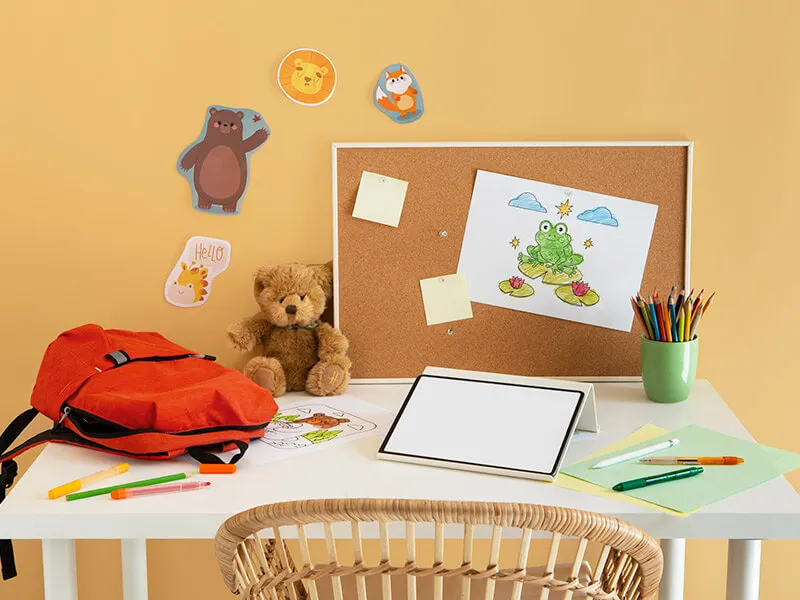
- Designing an Engaging Study Space for Back to School
The design of a study area can significantly impact your child's ability to focus. Consider elements like lighting, ergonomics, and even color schemes when setting up the space. Involve your child in the design process, letting them choose some decorative elements or organizational tools. This personal touch can make the study area more inviting, encouraging regular use throughout the school year.
- Making Homework Fun and Creative for Back to School
Homework is an inevitable part of school life, but it doesn't have to be a chore. With a well-designed study area in place, consider incorporating elements that make homework more engaging. This could be a small whiteboard for problem-solving, a pinboard for project ideas, or even a playlist of focus-enhancing music. By making the homework experience enjoyable, you're setting the stage for a more productive and less stressful back-to-school season.
Familiarizing Yourself and Your Child with the School
Knowing the ins and outs of your child's school can provide a sense of comfort and security for both of you. As the new school year begins, take the time to acquaint yourselves with the school's layout, staff, and policies. This proactive approach can alleviate first-day jitters and set the stage for a successful back-to-school transition.
- Visiting the School Before the First Day
A pre-emptive visit to the school can work wonders in easing any anxieties your child might have. Walk the halls, locate important rooms like the cafeteria and library, and if possible, meet some of the teachers. This familiarization tour can transform the school from an intimidating space into a welcoming environment, making the first day back a lot less daunting.
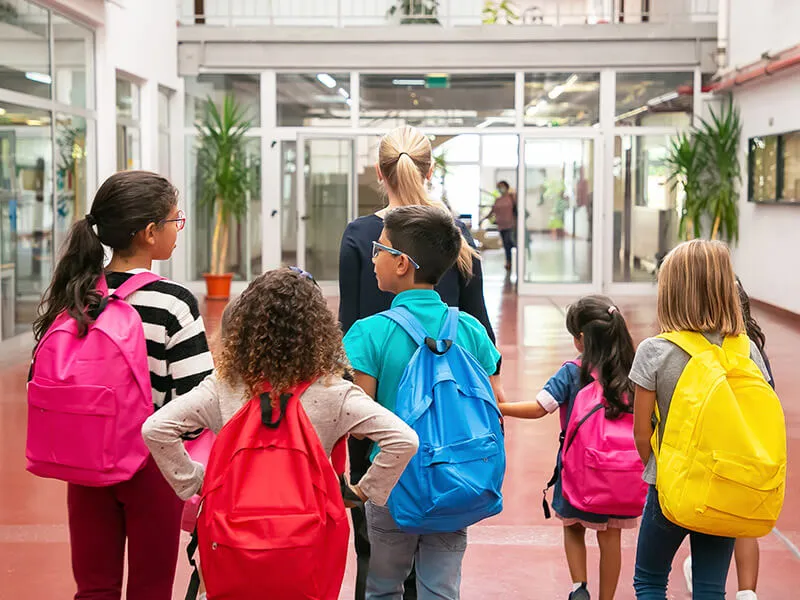
- Understanding Safety Measures and Procedures
Safety is a top concern, especially as children head back to school. The Government of Canada provides guidelines on school safety that you should be aware of the school's emergency procedures, pick-up and drop-off protocols, and any other safety measures in place. Discuss these with your child as well, so they know what to expect and how to act in various situations, adding an extra layer of security to the back-to-school experience.
Utilizing Resources for Back-to-School Support
The journey back to school is not one you have to navigate alone. There are numerous resources available to support both you and your child during this transitional period. From after-school care options to educational apps, leveraging these resources can provide added peace of mind and enrich your child's educational experience.
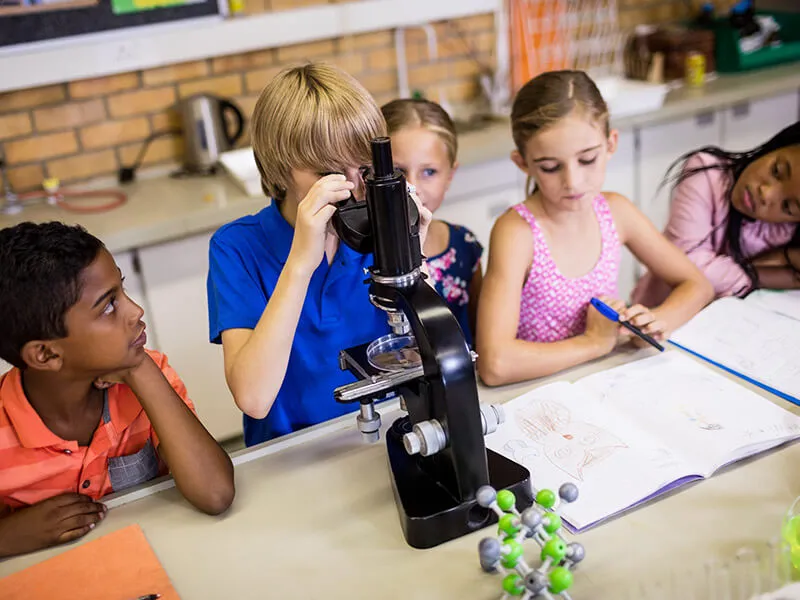
- Finding After-School Care Options for Back to School
After-school care is often a logistical puzzle for many parents. As you prepare for the new school year, explore the various options available, such as school-sponsored programs, community centers, or even private childcare. These services not only provide a safe environment for your child but also offer additional educational and social opportunities, enhancing the overall back-to-school experience. If you're struggling to find a reliable after-school care option, you can explore childcare centers through our directory.
- Embracing the Opportunities Ahead for Back to School
The start of a new school year is ripe with opportunities for growth and development. Beyond academics, there are extracurricular activities, social events, and various school initiatives that your child can participate in. Encourage them to try new things and take advantage of these opportunities. It's not just about grades; it's about developing a well-rounded individual, ready to take on the challenges and joys of going back to school.

Conclusion: Setting the Stage for a Successful Back-to-School Transition
As the back-to-school season approaches, preparation is key to ensuring a smooth and successful transition for both you and your child. From nurturing independence and confidence to establishing open communication and utilizing available resources, each step plays a crucial role in shaping your child's educational journey. While the prospect of a new school year may bring its share of challenges and anxieties, it's also a time ripe with opportunities for growth and discovery.
Remember, you're not alone in this journey. Schools, communities, and even online platforms offer a wealth of resources to help you navigate this exciting yet sometimes daunting period. By taking a proactive and informed approach, you can turn the back-to-school transition from a stressful event into an enriching experience that sets the tone for the academic year ahead.






